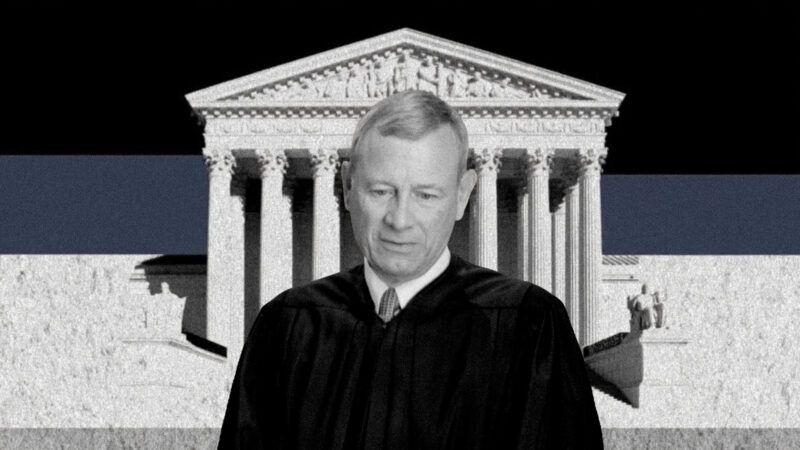After 20 Years as Chief Justice, John Roberts Is Now Friend and Foe to Executive Power
Which version of the chief justice will emerge in the Supreme Court’s newest term?

It has now been just a little over 20 years since John Roberts was sworn in as chief justice of the United States back on September 29, 2005. So let's mark this two-decade milestone by taking a closer look at Roberts' jurisprudence and the mark it has left on American law, especially when it comes to the powers of the president.
You’re reading Injustice System from Damon Root and Reason. Get more of Damon’s commentary on constitutional law and American history.
Characterizing Roberts' judicial philosophy is no simple task. Is it accurate to say that he practices judicial restraint by deferring to the policy choices made by elected officials? Yes, we can accurately say that, but only sometimes.
In one of his most famous majority opinions, Roberts led the Supreme Court in upholding the Patient Protection and Affordable Care Act, also known as Obamacare. "It is not our job," Roberts declared in National Federation of Independent Business v. Sebelius (2012), "to protect the people from the consequences of their political choices." In other words, the argument went, because Obamacare represented the will of the people as expressed via the agenda of a popularly elected president, the unelected judiciary had no business standing in the way.
Yet Roberts has also led the Supreme Court in thwarting the agendas of popularly elected presidents in other high-profile cases. In Department of Homeland Security v. Regents of the University of California (2020), Roberts wrote the majority opinion stopping President Donald Trump from rescinding the Deferred Action for Childhood Arrivals (DACA) program. In Biden v. Nebraska (2023), Roberts blocked President Joe Biden from imposing his student debt cancellation plan. No deference for either president in those important cases.
But Roberts has also led the Supreme Court in massively expanding executive power, most notably in Trump v. United States (2024), which granted the president broad immunity from criminal prosecution.
So, while both Biden and Trump saw some of their signature presidential policies struck down, the signature policy of President Barack Obama was upheld on deferential grounds, and the presidency itself has emerged stronger than ever in other crucial ways, all thanks to decisions written by Roberts.
Is there a through line connecting such cases? Is there a clear judicial philosophy that accounts for the results? I've been following Roberts's tenure for much of the last two decades, and I'm not sure that there is. Roberts has long extolled the virtues of judicial deference, yet he only does the deferring in select cases. Roberts has put a stop to presidential overreach (sometimes), yet he has also placed a vast protective shield over presidential misconduct. To be generous, I suppose we might say that Roberts's judicial philosophy contains multitudes.
Next week, the Supreme Court will kick off its 2025–2026 term, and the docket is already packed with momentous cases dealing with the powers of the president. That means that all eyes will be on the chief justice, who may well be in the position to tip the balance in one or more of these matters.
Will we get the version of Roberts that's more likely to defer to Trump or the one that's more likely to curtail Trump? Which one of Roberts's judicial multitudes will step to the fore?
For better or worse, we're about to find out.


Show Comments (14)